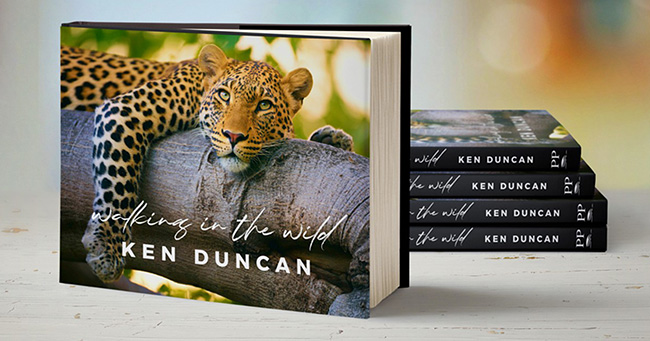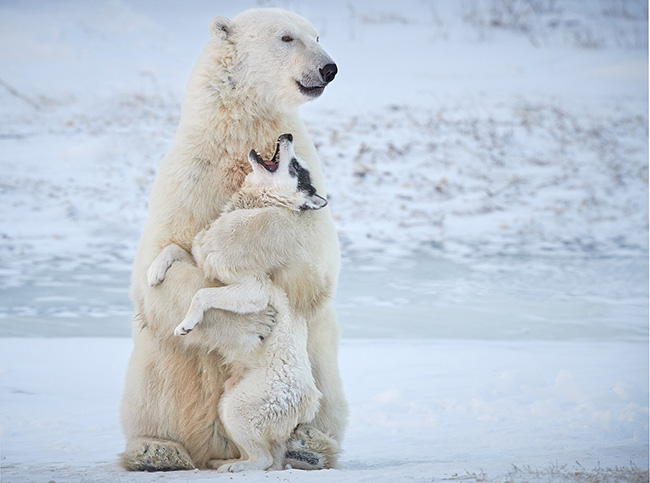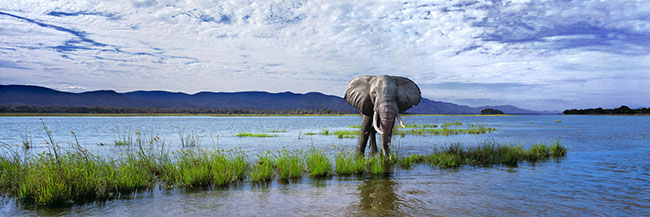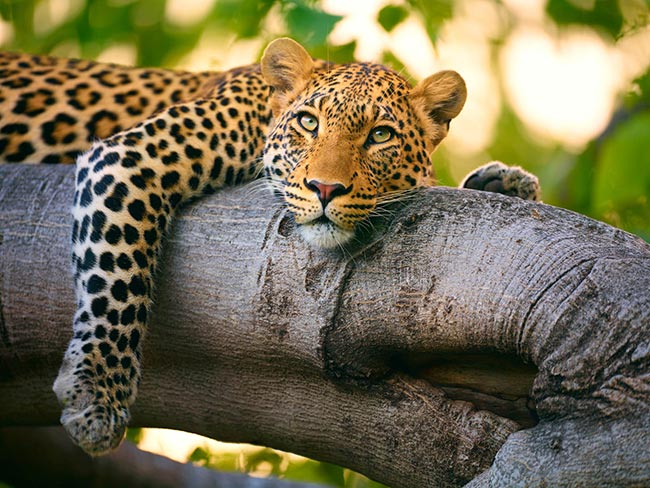
The devoted readers of this blog will be familiar with Ken Duncan, OAM and his photography. Regarded as a pioneer for showcasing the Australian landscape through photography, Ken has been a LUMIX Global Ambassador for over a decade.
During this period Ken has released countless photography books, but his latest offering ‘Walking in the Wild’ is the first to be dedicated solely to showcasing his wildlife photography. The 168 page full colour publication features photographs of the rarest and most beautiful animals on our planet, accompanied with entertaining and educational stories behind some of the photos.
We were curious to learn what inspired this new chapter (pun intended) in his professional career, so sent him a few questions to find out more.
Q: Your latest book Walking in the Wild is quite a departure from your traditional landscape work. How did the idea to showcase wildlife come about?
A: I’ve always had a fascination with wildlife, as it’s part of our natural world, which I love shooting. And I’ve always loved the experience of wildlife photography, but in the past it has been more of a personal journey. I don’t just want to photograph an animal but to incorporate it into the landscape. Throughout this journey, some of my results became very popular as Limited Edition Prints and my clients started asking me to produce a wildlife book, showing this aspect of my work. When COVID came along, it seemed like the perfect time to go through my archive of wildlife shots and finally make a selection from thousands of images to come up with this new book.
Q: How does your approach to shooting wildlife differ from shooting landscapes?
A: Landscapes don’t try to eat you, whereas wildlife, by its very nature, can create some interesting situations. Both forms of photography require patience in waiting for the right moment. But with wildlife, you need to understand the nature of your subject so you can learn to anticipate their movements and know when you’re going to get that exciting moment. Also, with wildlife you often need longer lenses so you can closer to the subject. However, I also shoot wildlife with shorter lenses, as it’s not always just about focussing on the animal, but about capturing it as part of the landscape. And it depends on which animal you’re shooting. For example, when photographing an elephant, I’ve used a 14 mm lens. But when shooting a leopard, a 400-800 mm lens is often the best, because cats tend to be far more skittish.

“Share the Love” – Churchill, Canada.
Q: Which do you find more challenging? Wildlife or landscapes?
A: Wildlife can be more difficult because you are at the mercy of a moving subject. But each style of photography has its difficulties, as with landscape you are always waiting for the right light and conditions. But the key with both is to remain calm and be patient. Then when the right time comes, you will be ready.
Q: What was your favourite image in the book and why?
A: I really don’t have one favourite, as the different images all bring back to me the memory of an amazing moment. People often ask me which is my favourite image – wildlife or landscape – and my answer is “the next one”. But a few of my favourites from the new book are:
- Share the Love – an image of a polar bear playing with a husky in Canada;
- Eyes of Africa – a close up shot of a beautiful leopard’s face in Botswana;
- The Power of One – a huge bull elephant I photographed on a grass island in the Zambezi River in Zimbabwe.
Q: Which was the most challenging image from the book to capture?
A: The Power of One. I was on safari in Zimbabwe at a magical spot called Mana Pools. This huge bull elephant walked right past our camp and down to the river, then swam out to the grassy islands in the middle of the Zambezi River. Our guide thought this might be a good opportunity for me to get close with my very wide-angle camera, so we paddled out into the river and slowly moved closer to the big bull. We kept a watchful eye for crocodiles and hippos, which are plentiful in this area. In the distance, you can actually see hippos on the river bank. This elephant was only about 30 feet from us, but my camera makes him appear further away. You will notice his left ear is slightly blurred – that’s because it was twitching. Just as I took this shot, the elephant began to charge. Fortunately for my racing heart, he stopped after only a few paces. He is an awesome sight – a great elephant in the mighty Zambezi.

“The Power of One” – Zambezi River, Zimbabwe
Q: Where were some of the locations where the images from the book were shot? Which was your favourite?
A: Botswana is an amazing country, with vastly different regions from the Okavango Delta in the north to Mashatu Game Reserve in southern Botswana. A large number of photos in the new book were taken in Botswana. I also love Antarctica – brilliant landscapes with penguins and elephant seals. Kenya is a country I’ve visited several times and always got great shots there – particularly from Amboseli National Park and the Masai Mara. But Australia is possibly my latest favourite and I’ve included images from the Snowy Mountains in this new book.
Q: What were the most common focal lengths you shot for images in the book?
A: For me, as a landscape photographer, I never wanted to just photograph the animals, but to show them in the landscape. So I’ve shot wildlife on a full range of lenses from 14 mm right up to 800 mm. For someone who is concentrating only on the wildlife, probably the most popular lenses would be 70-200 mm lens and something from 200 mm up to 800 mm. When it comes to the micro 4/3 format – which I think is one of the most exciting formats for up and coming wildlife photographers – Panasonic have an amazing 100-400 mm lens, which is equivalent to a 200-800 mm focal length on a full frame camera. You can buy this lens for about $2,500 and it’s light – not like some of the longer lenses in full frame format and medium format which are bulky and heavy and virtually require their own luggage.

“Eyes of Africa” – Mashatu Game Reserve, Botswana
Q: Do you have any suggestions on how readers can get into wildlife photography without travelling to an exotic location?
A: One of the best ways to learn to photograph animals is to go to zoos – but user-friendly zoos. One of the best I can recommend, which is very photographer-friendly, is Mogo Zoo on the NSW south coast. Mogo Zoo actually runs photography courses, which I highly recommend. It’s best to practice in zoos before you end up spending lots of money on an African safari, only to be frustrated by not understanding the capabilities of your equipment. When you’re on safari, you often don’t have time to be trying to work things out. You have to be able to respond quickly, or you will miss many photo opportunities.
Q: What projects are you working on right now?
A: I’m mainly working with Indigenous people in central Australia through the Walk a While Foundation. We are equipping Indigenous youth in remote communities with the tools, skills and technologies we take for granted so they can tell their stories. We are training them in photography, cinematography and music and I would like to thank Panasonic for their help to date with providing equipment. The Walk a While project is very successful, and we are uncovering some amazing talent in these remote communities. I will always want to take photos, but for me it is also important to give back and help those who don’t have the opportunities we have, as I think photography is an amazing way to tell a story.
The book, Walking in the Wild by Ken Duncan is available from his website.
